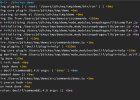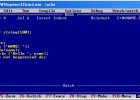There are many ways to install MySQL Server on Linux. Here we are going to show you the easiest and fastest way to install it.
What is MySQL Server?
MySQL is a Relational Database Management System. It was originally developed by Oracle and released as open source software in 1996. MySQL Server is a database server for the MySQL database management system.
How to install MySQL Server
Step 1: Open the Command Prompt window: Open the command prompt.
Step 2: Type “mysqld –install”: Type “mysqld –install” into the command prompt window.
Step 3: Type “mysql –install MySQL Server”: Type “mysql –install MySQL Server” into the command prompt window.
Step 4: Type “mysql -uroot -p”: Type “mysql -uroot -p” into the command prompt window.
Step 5: Type “use mysql”: Type “use mysql” into the command prompt window.
Step 6: Type “create database db_name”: Type “create database db_name” into the command prompt window.
Step 7: Type “exit”: Type “exit” into the command prompt window.
Video tutorial installing MySQL Server
The following is a video tutorial on how to install MySQL Server in Linux. It covers installing the server and configuring the server.
For an extensive exploration of MySQL, we recommend diving into over 30 detailed tutorials available at MySQL Tutorials hub, covering a wide range of topics and techniques.
Popular questions about MySQL server
1. How do I configure MySQL?
After you have installed MySQL, you will be prompted to enter your MySQL username and password.
2. How do I start MySQL?
To start MySQL, go to the command line and type the following: /etc/init.d/mysqld start.
3. How do I stop MySQL?
To stop MySQL, go to the command line and type the following: /etc/init.d/mysqld stop.
4. How do I uninstall MySQL Server?
To uninstall MySQL Server, go to the command line and type the following: /etc/init.d/mysqld stop. Then, go to the command line and type the following: /etc/init.d/mysqld start.
5. What is a database?
A database is a collection of information that is organized and stored.



